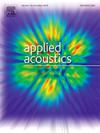Orthogonal loudspeaker matching for stable and accurate multizone sound field reproduction
IF 3.4
2区 物理与天体物理
Q1 ACOUSTICS
引用次数: 0
Abstract
Multizone sound field reproduction employs loudspeakers to create personalized sound zones within a shared space. The selection of optimal loudspeaker placements is crucial for enhancing system performance, which has led to the development of various algorithms for loudspeaker placement optimization. Typically, these methods focus on reproducing a single desired sound field, often neglecting the exchange between bright and dark zones. This paper evaluates these methods in reproducing multiple desired sound fields. Additionally, existing approaches generally emphasize either reproduction accuracy or system stability, but rarely both. To address this limitation, this study introduces an iterative method that extracts the orthogonalization component between the candidate loudspeaker and the selected loudspeakers, referred to as the “orthogonal loudspeaker”. The sound fields reproduced by this component serve as the criterion for determining optimal loudspeaker placement during the iteration process. Experiments conducted in both narrowband and broadband settings demonstrate that the proposed method can accurately reconstruct the desired sound fields while maintaining a relatively low condition number for the selected loudspeaker configuration. Moreover, the proposed method exhibits high stability below 600 Hz and ensures accurate reproduction at higher frequencies, even in the presence of system perturbations.
求助全文
约1分钟内获得全文
求助全文
来源期刊

Applied Acoustics
物理-声学
CiteScore
7.40
自引率
11.80%
发文量
618
审稿时长
7.5 months
期刊介绍:
Since its launch in 1968, Applied Acoustics has been publishing high quality research papers providing state-of-the-art coverage of research findings for engineers and scientists involved in applications of acoustics in the widest sense.
Applied Acoustics looks not only at recent developments in the understanding of acoustics but also at ways of exploiting that understanding. The Journal aims to encourage the exchange of practical experience through publication and in so doing creates a fund of technological information that can be used for solving related problems. The presentation of information in graphical or tabular form is especially encouraged. If a report of a mathematical development is a necessary part of a paper it is important to ensure that it is there only as an integral part of a practical solution to a problem and is supported by data. Applied Acoustics encourages the exchange of practical experience in the following ways: • Complete Papers • Short Technical Notes • Review Articles; and thereby provides a wealth of technological information that can be used to solve related problems.
Manuscripts that address all fields of applications of acoustics ranging from medicine and NDT to the environment and buildings are welcome.
 求助内容:
求助内容: 应助结果提醒方式:
应助结果提醒方式:


